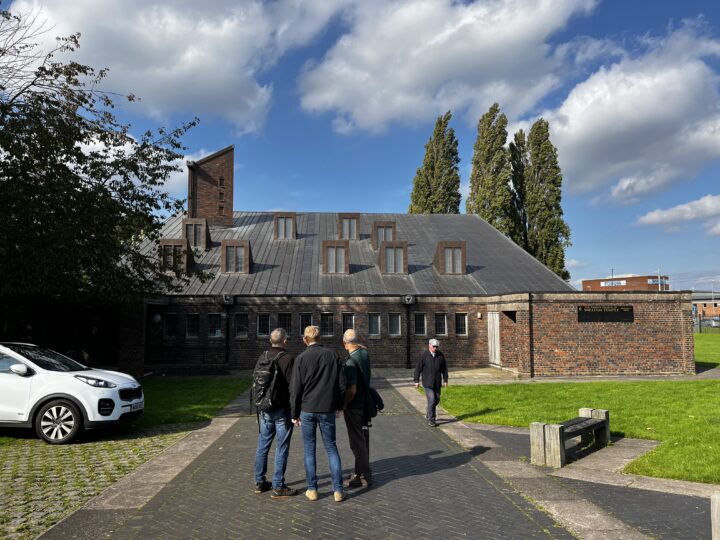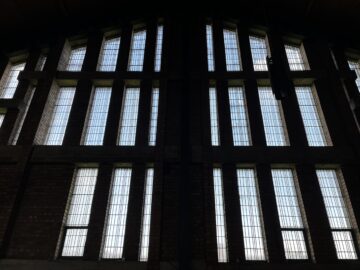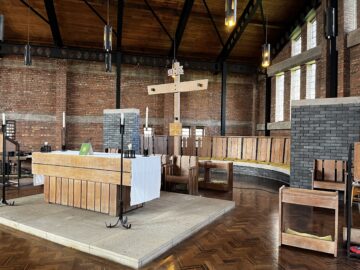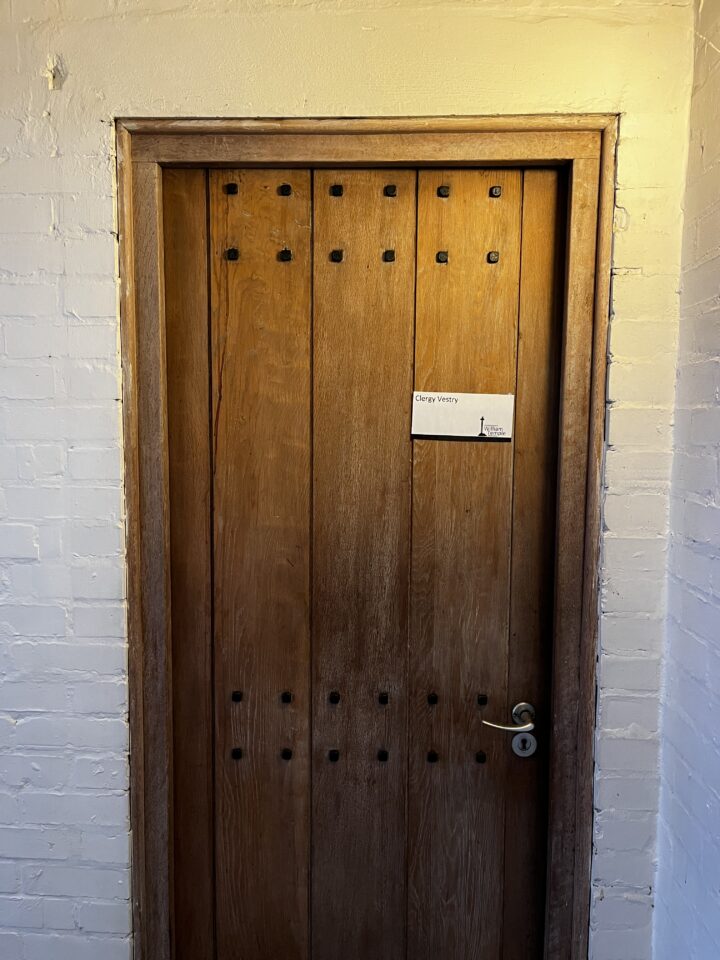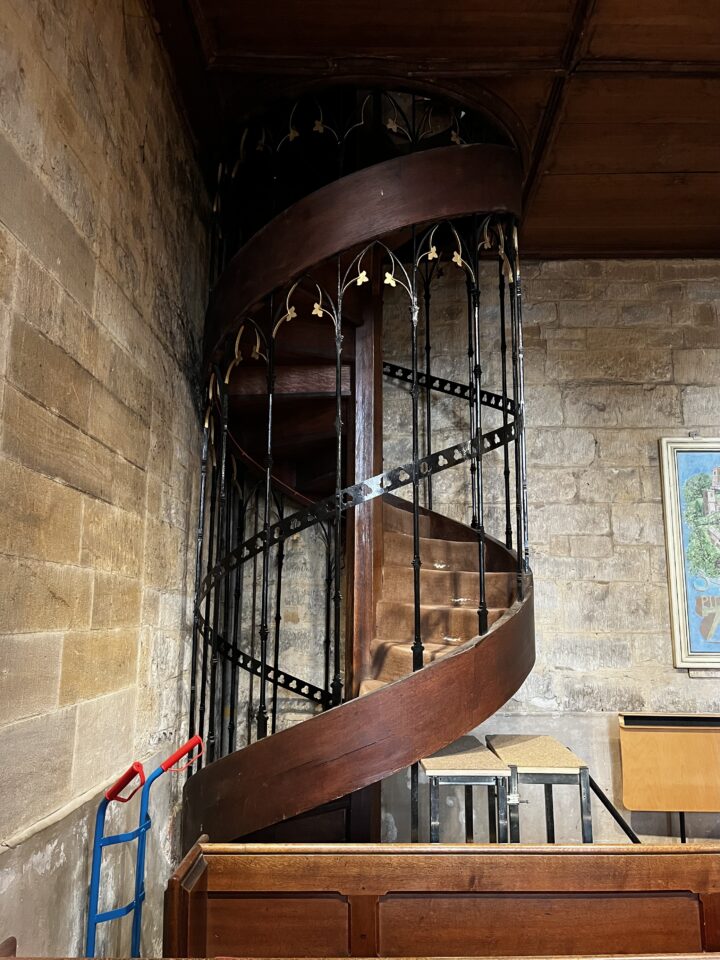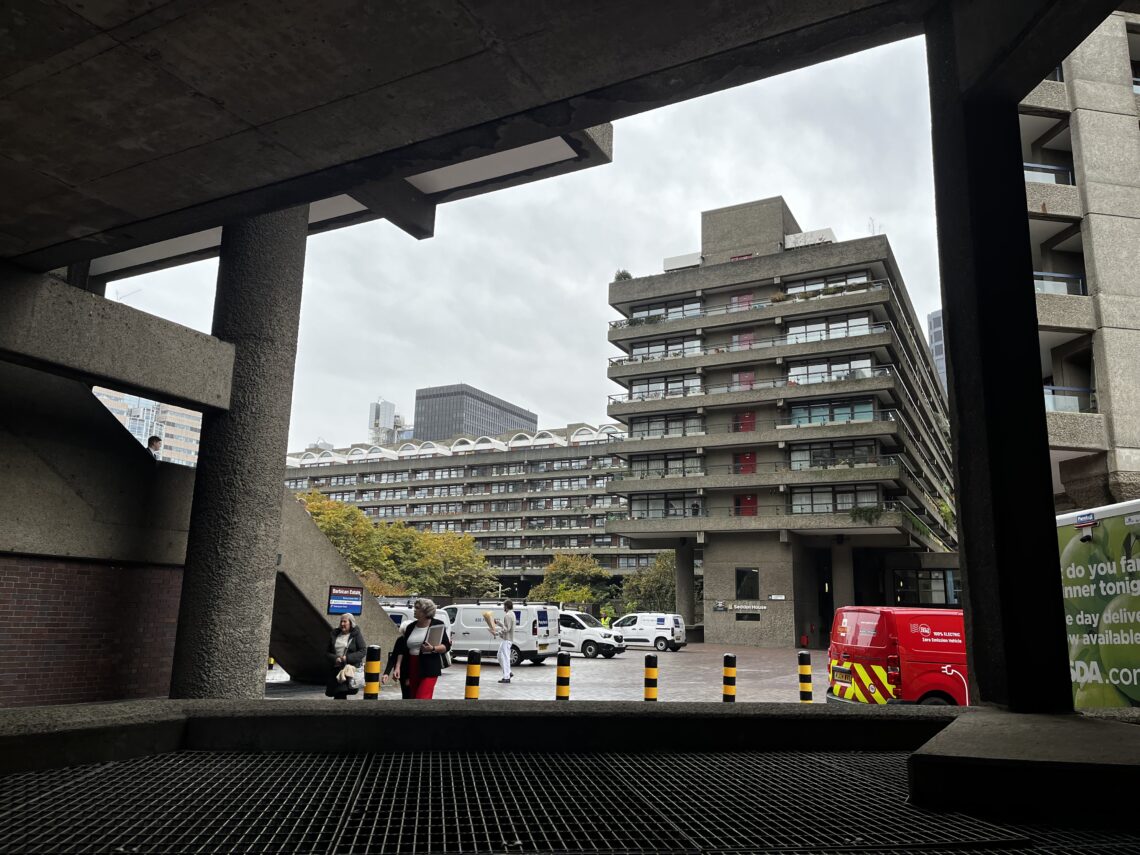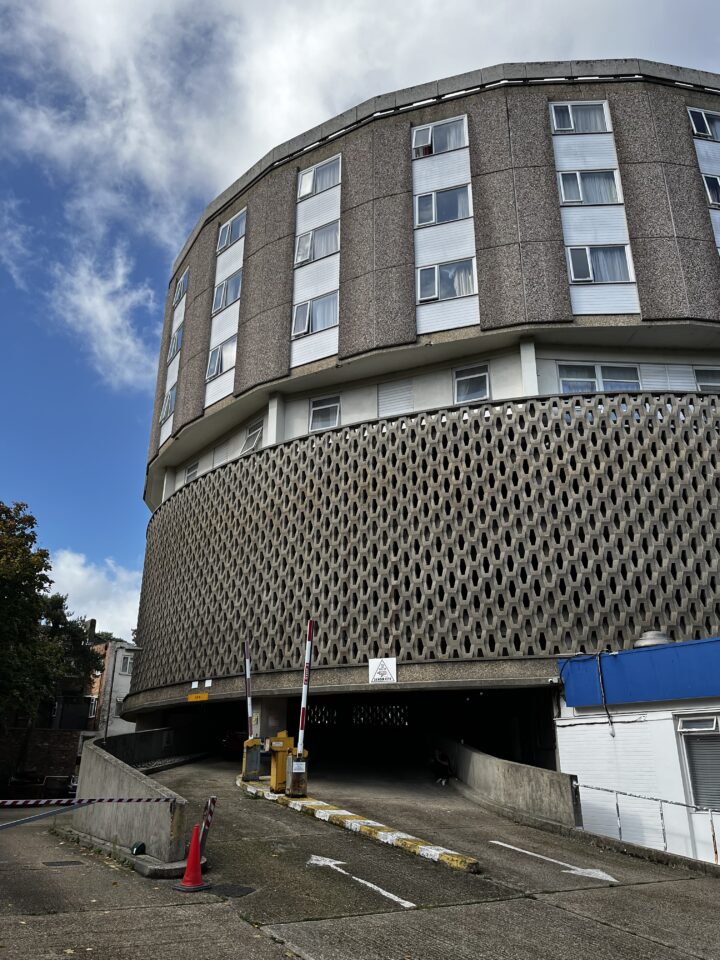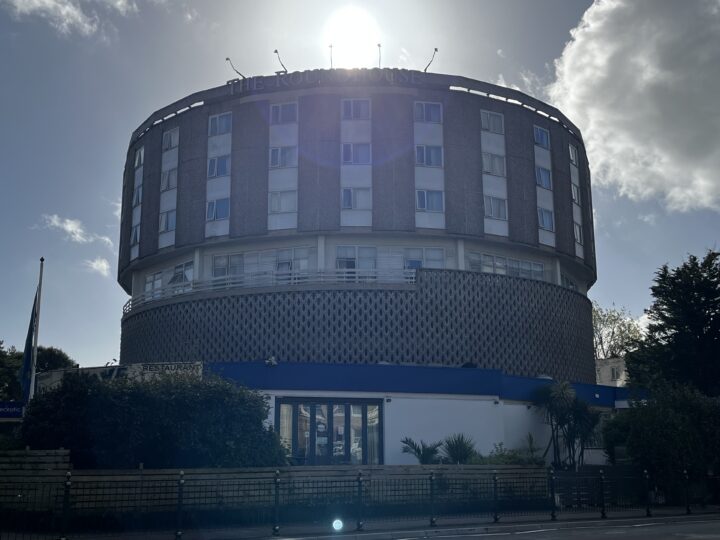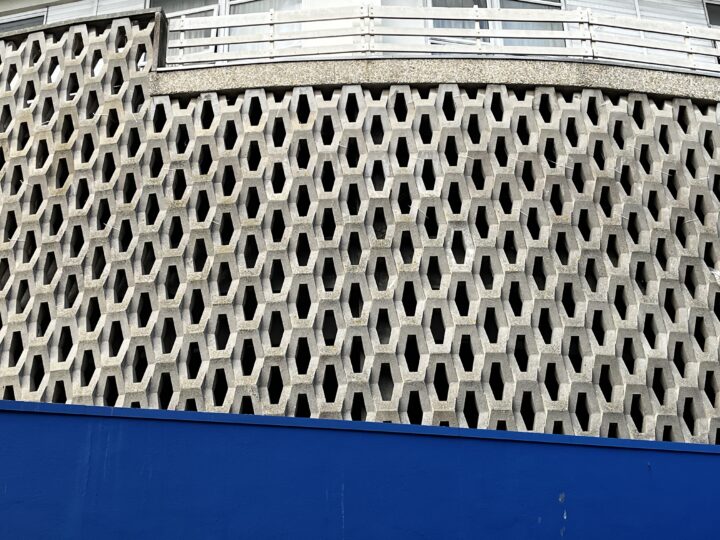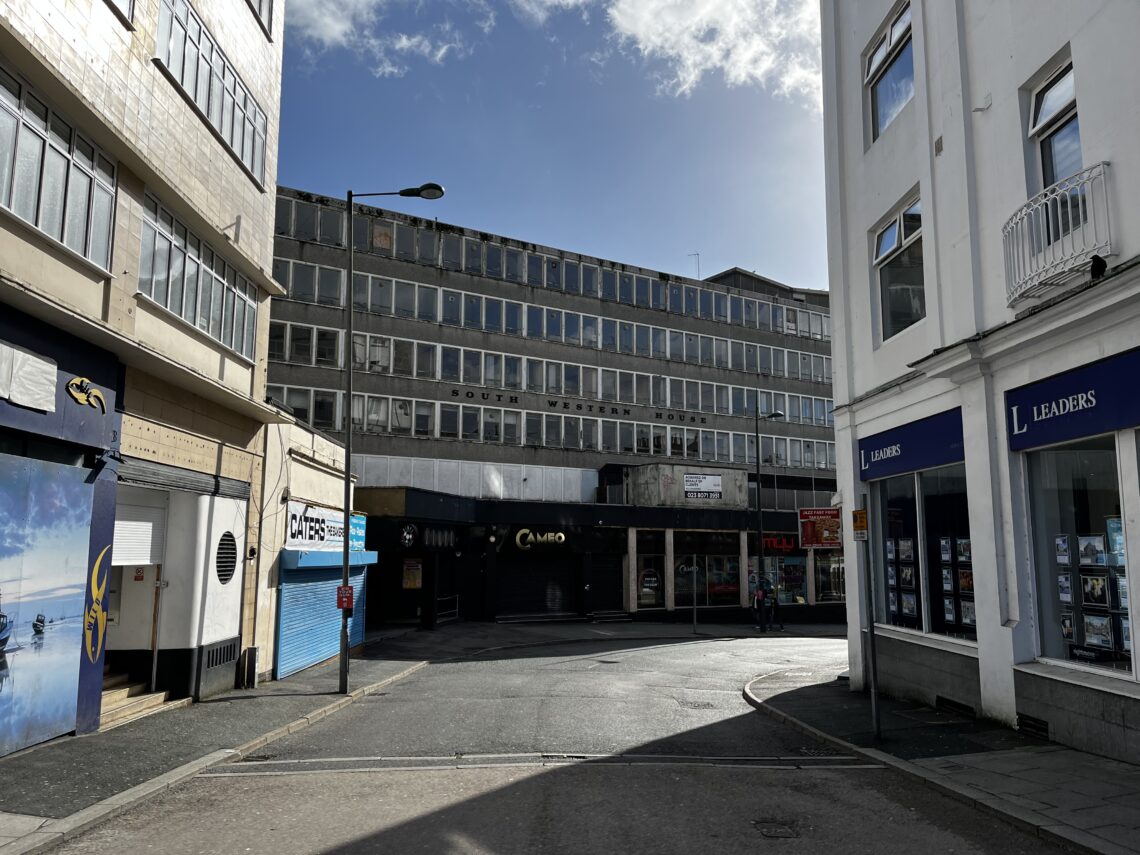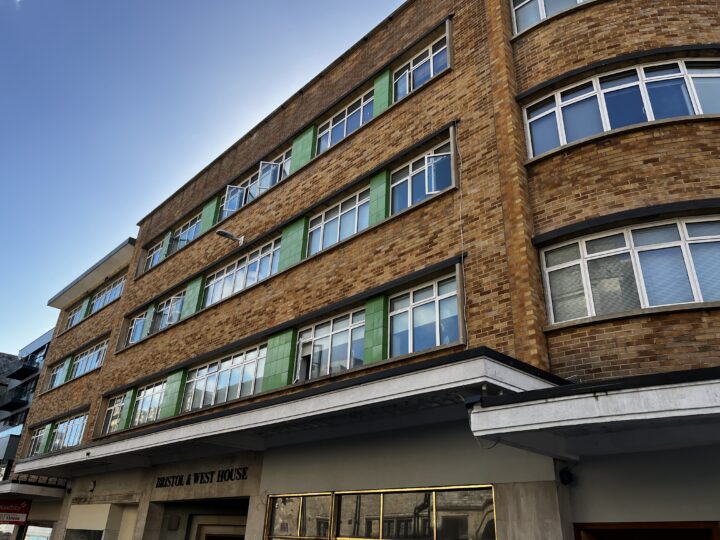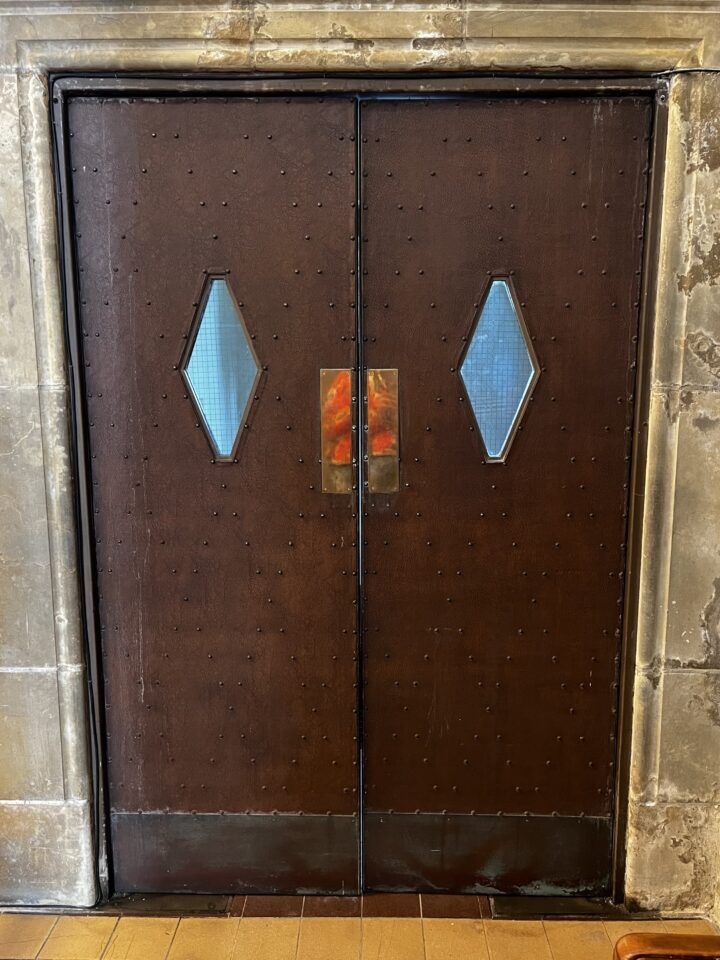
Latest posts
On M62 reservoirs
Steve could make a wet reservoir look good 😍 And does! This is really interesting actually, despite living in Manchester once upon a time I didn’t realise how much earthworks the M62 required until I saw it written down all in one place.
William Temple Parish Church, Wythenshawe, Manchester, 2024
Spiral staircase at Sherborne Abbey, 2024
Barbican Estate, London, 2024
Roundhouse Hotel, Bournemouth, 2024
Final bit from Bournemouth: Roundhouse Hotel. The reviews of the hotel are pretty dire, but no matter. I love any rotunda, especially when it’s also a car park, and especially when it’s wrapped in a beautiful concrete lattice.
Bonus: the logo of this restaurant and bar on the ground floor of the hotel.
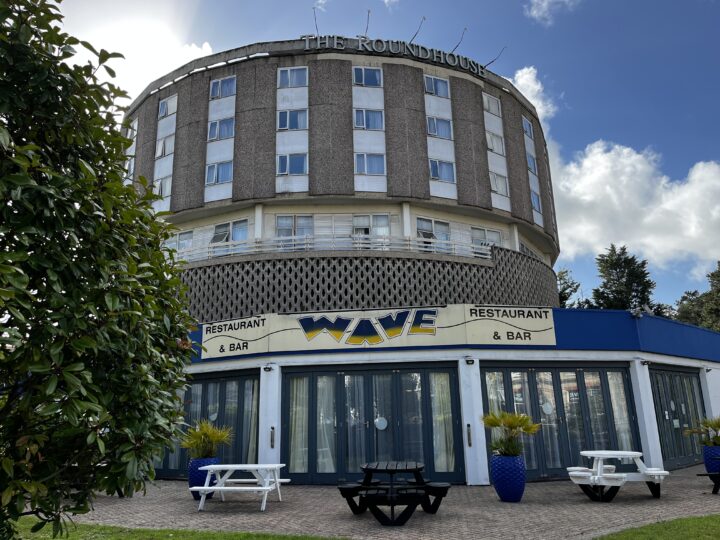
South Western House, Bournemouth, 2024
Beales department store, Bournemouth, 2024
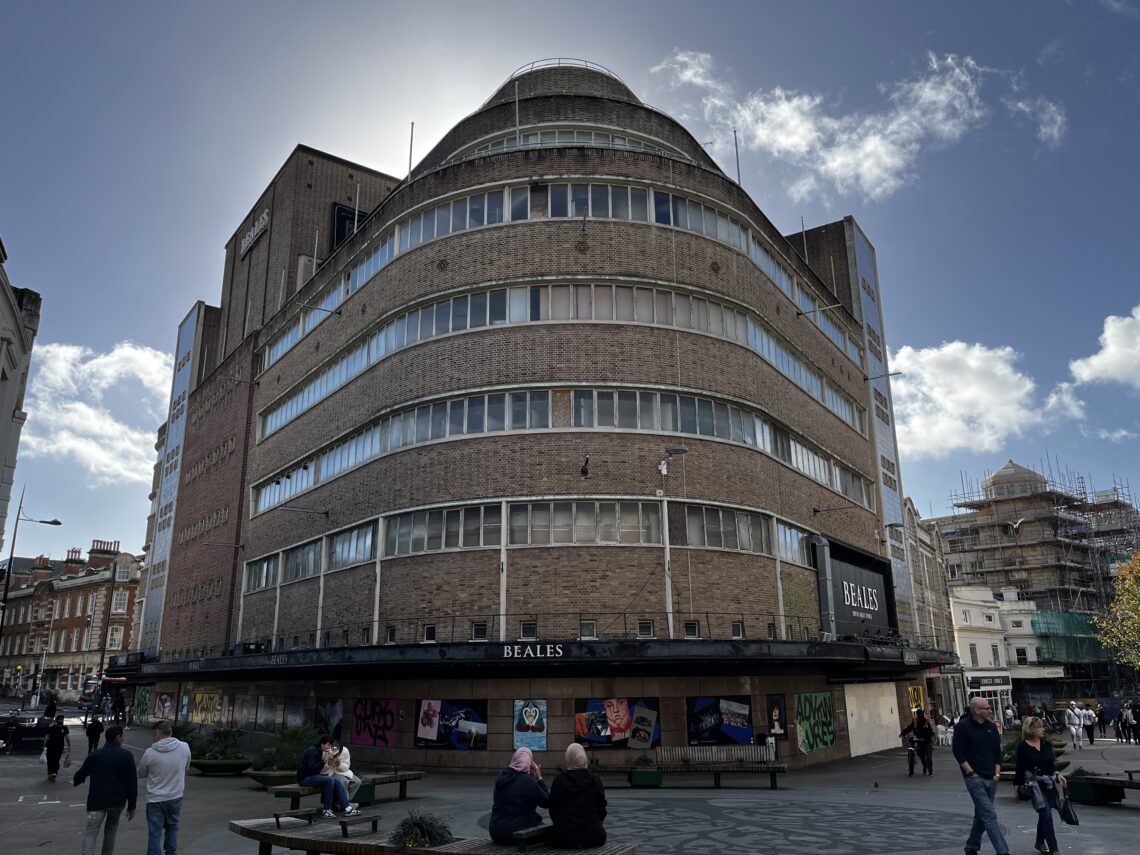
The massive, looming presence of the Beales building, a former department store in Bournemouth.
Having gone bust in 2020, the Twentieth Century Society writes:
A planning application to convert most of the building to residential use was refused in 2016 because of a wish to retain retail floor space in the town’s primary shopping area against a backdrop of a sizable public campaign to retain Beales as a store – “I back BEALES.”
Look at how well that worked out! In July 2024, the building has been granted planning permission to convert it into housing with gym and pool, as well as three ground floor retail units. These will surely be of similar architectural value as those in Bristol & West House.
Bristol & West House, Bournemouth, 2024
Walking away from the Bournemouth Echo building, we were distracted by Bristol & West House, a 1958 art deco building. Originally it must’ve been offices + retail, with the upper floors being converted to become the plainest apartments imaginable in 2015. Externally it’s a very fine building, however.
Brighthelm Centre, Brighton, 2024
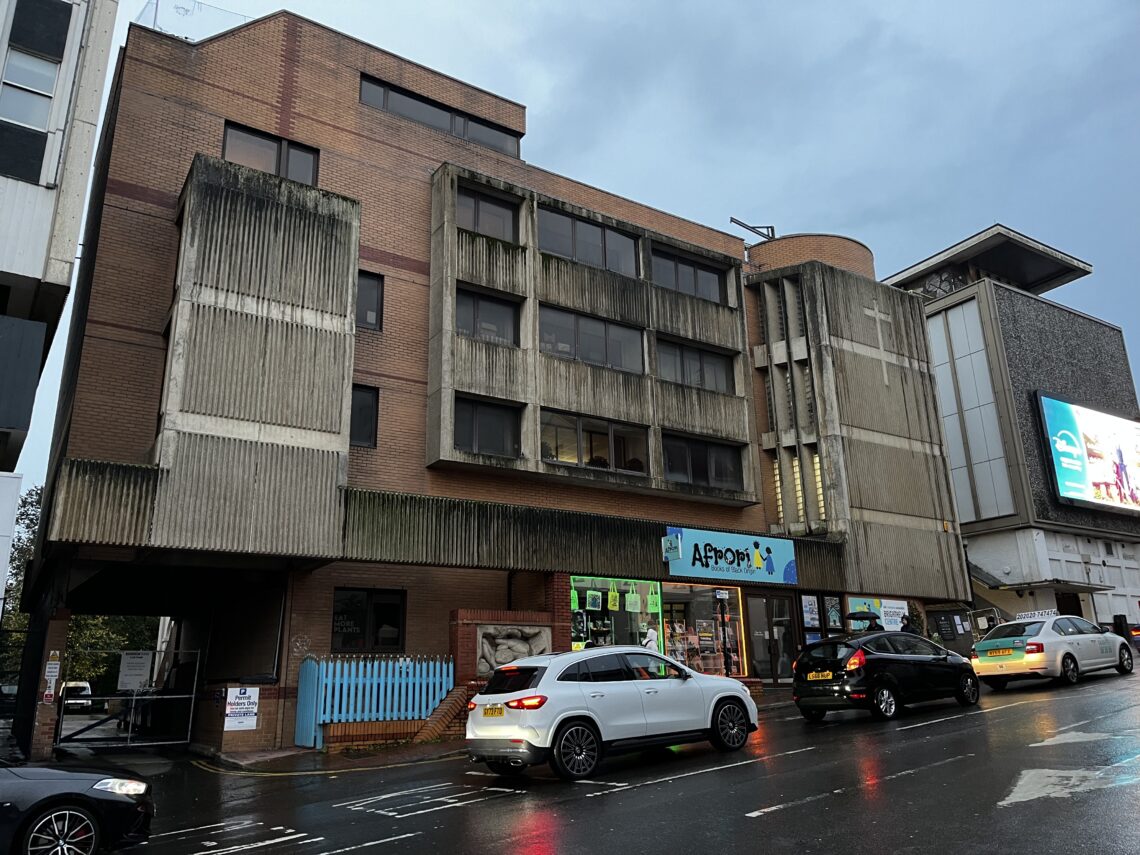
I’ve risked my last train home out of rainy Brighton to stop and take a picture of this beauty. This is the Brighthelm Centre. I love the textured concrete at the front of the building, and while the brick behind doesn’t do much for me, it certainly makes a great first impression. The cross recessed into the textured concrete is a particularly nice touch.
